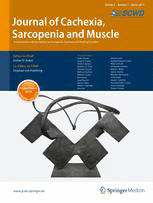
“Muscle wasting, anorexia, and metabolic dysregulation are common side-effects of cytotoxic chemotherapy, having a dose-limiting effect on treatment efficacy, and compromising quality of life and mortality.
Extracts of Cannabis sativa, and analogues of the major phytocannabinoid Δ9-tetrahydrocannabinol, have been used to ameliorate chemotherapy-induced appetite loss and nausea for decades. However, psychoactive side-effects limit their clinical utility, and they have little efficacy against weight loss.
We recently established that the non-psychoactive phytocannabinoid (CBG) stimulates appetite in healthy rats, without neuromotor side-effects. The present study assessed whether CBG attenuates anorexia and/or other cachectic effects induced by the broad-spectrum chemotherapy agent cisplatin.
RESULTS:
CBG (120 mg/kg) modestly increased food intake, predominantly at 36-60hrs (p<0.05), and robustly attenuated cisplatin-induced weight loss from 6.3% to 2.6% at 72hrs (p<0.01). Cisplatin-induced skeletal muscle atrophy was associated with elevated plasma corticosterone (3.7 vs 13.1ng/ml, p<0.01), observed selectively in MHC type IIx (p<0.05) and IIb (p<0.0005) fibres, and was reversed by pharmacological rescue of dysregulated Akt/S6-mediated protein synthesis and autophagy processes. Plasma metabonomic analysis revealed cisplatin administration produced a wide-ranging aberrant metabolic phenotype (Q2Ŷ=0.5380, p=0.001), involving alterations to glucose, amino acid, choline and lipid metabolism, citrate cycle, gut microbiome function, and nephrotoxicity, which were partially normalized by CBG treatment (Q2Ŷ=0.2345, p=0.01). Lipidomic analysis of hypothalami and plasma revealed extensive cisplatin-induced dysregulation of central and peripheral lipoamines (29/79 and 11/26 screened, respectively), including reversible elevations in systemic N-acyl glycine concentrations which were negatively associated with the anti-cachectic effects of CBG treatment.
CONCLUSIONS:
Endocannabinoid-like lipoamines may have hitherto unrecognized roles in the metabolic side-effects associated with chemotherapy, with the N-acyl glycine subfamily in particular identified as a potential therapeutic target and/or biomarker of anabolic interventions. CBG-based treatments may represent a novel therapeutic option for chemotherapy-induced cachexia, warranting investigation in tumour-bearing cachexia models.”
https://www.ncbi.nlm.nih.gov/pubmed/31035309
“Cannabigerol (CBG) is one of the major phytocannabinoids present in Cannabis sativa L. that is attracting pharmacological interest because it is non-psychotropic and is abundant in some industrial hemp varieties. The results indicate that CBG is indeed effective as regulator of endocannabinoid signaling.”
“Antitumor activity of cannabigerol against human oral epitheloid carcinoma cells. Cannabigerol exhibited the highest growth-inhibitory activity against the cancer cell lines.” https://www.ncbi.nlm.nih.gov/pubmed/9875457








